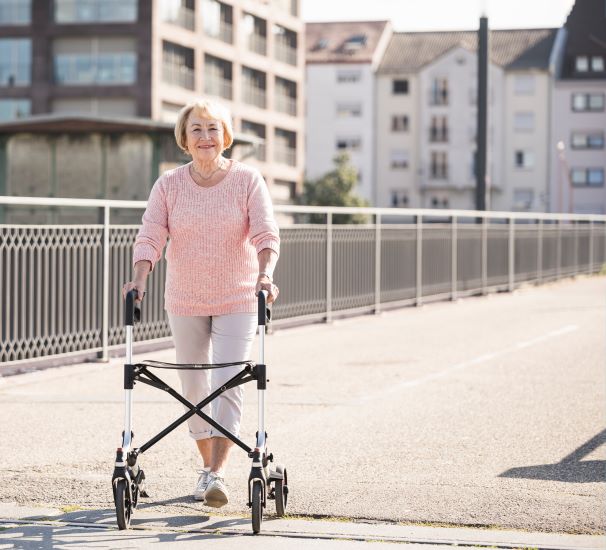For travellers with disabilities (or invisible disabilities) everything needs to be planned in advance – down to the last detail because disability access simply often isn’t available. Thankfully, the World Travel & Tourism Council (WTTC) is looking at ways to improve accessible travel in Australia and the wider world.
In a press release, WTTC shares that access and inclusion are now a central focus “to aid global travel & tourism recovery”. In this article we highlight some of the main points from the paper for Inclusive & Accessible Guidelines to aid global Travel & Tourism recovery released by WTTC.
And we’ve also included some of our favourite destinations that are fully designed to support disability travel in Australia. Some of these accessible holiday spots even accommodate pets!
4 pillars for disability access and inclusion in travel and tourism
In 2021, the WTTC released a new paper on increasing disability access and inclusion in travel and tourism. In the paper, the council looks at four main approaches to improve disability travel access:
- Developing a holistic approach to supporting inclusivity and accessibility in travel
- Creating safe travel spaces
- Designing a system that is relevant and engaging
- Demonstrating and embodying inclusion and accessibility in the travel and tourism sector
But what do these four disability access pillars actually mean? How do you develop a system that is inclusive and accessible or create a safe space for people travelling with disability? Let’s look at how the WTTC hopes to achieve each pillar in more detail.
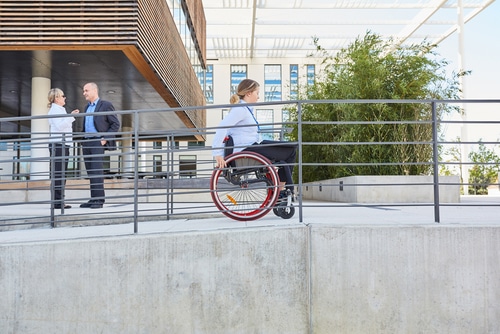
1. Developing inclusive and accessible tourism
Pillar one is about the need for travel and tourism businesses to make accessible travel information easy to access, even before you try to make a booking. Information about disability access should be freely available, and easy to find and understand.
In other words if you’re going on holiday you shouldn’t have to feel like you’re working at a desk job just to make sense of whether your travel options are accessible or not.
International accessibility standards
Travel and tourism businesses need to offer more and better disability accessible options when it comes to products and services. And it doesn’t stop there because the accessible approach should be applied to communication and information as well as the built environment.
Online services need to follow digital accessibility standards so there aren’t barriers in the way of making a booking, changing a booking or contacting a travel business for accessible travel. Having a disability expert on the team and in leadership is all part of making this achievable.

Disability access barriers need to be clear
Importantly, if a product or service or facility ISN’T disability accessible, this should always be made clear from the outset. Ideally travel and tourism businesses that can’t meet disability access goals should try teaming up with other companies to close the gaps in what and how they offer products and services.
Your opinion and feedback
Feedback is so important too. Businesses should do everything they can to be disability inclusive and accessible and they shouldn’t make assumptions about the other person’s needs. That’s why they need to make it possible for travellers with disability needs to provide valuable feedback on their experience. This will be a true measure of what works (and what doesn’t).
Staff training
Staff should be trained to be aware of disabilities and how to best support accessibility in travel. This means all staff should be given general training, and customer-facing staff should receive specialist training. Training should also be ongoing and well-resourced.
Training should be detailed and vast and help to actively counter prejudice, or bias – whether conscious or unconscious. It should be about helping staff understand a wide range of disability types and common barriers. Also it should include training staff about language and terminology that is appropriate to use when communicating about disability access needs.
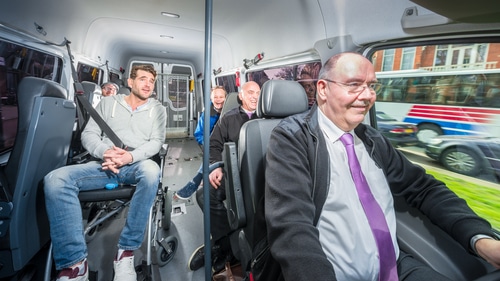
2. Creating safe environments
Disability access solutions need to be integrated into travel and tourism to avoid discrimination or ostracization. As the guidelines say: A safe space is not just about bodily safety; it is also about the
emotional and inferred safety of the individual.
This refers to the attitudes of staff who need to at all times be inclusive in their attitude towards customers. This means reminding staff at all times that their approach is what makes a customer feel welcome.
Additionally, disability access signage should always be clear on site making it easier to navigate the environment. This includes having written signs, images, photos, braille and audio when possible.
Incorporate feedback from travellers with disability and also test disability specific accessible features to guarantee they’re the appropriate solution.
Make accessible features easy to use so travellers don’t need assistance. Or if assistance is needed, always have staff on standby and available to help.
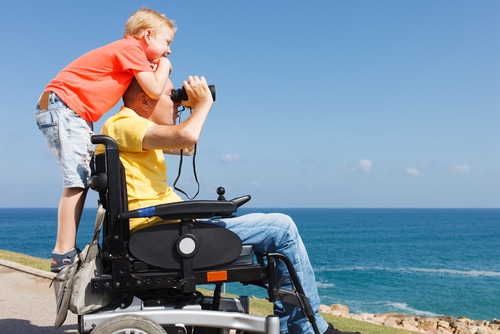
3. Designing a disability accessible system that is relevant and engaging
This pillar is about being flexible and innovative. Disability accessible solutions are constantly being developed and many options exist today to make travelling with disability easier than used to. Travel and tourism businesses should therefore be able to evolve with the times and never stop looking at newer better solutions.
This pillar is essentially about businesses looking to keep abreast of solutions and also developing solutions from the experiences their customers have. That means really and truly incorporating feedback from the booking process and all the way through a customer’s journey.
Besides offering disability accessible solutions upfront, this pillar is also about seamlessly being able to resolve problems that come up. Whether this means having expertly trained staff or offering custom travel options and even being able to adapt travel itineraries to make them disability specific where needed.
John Sage is the author of these disability accessible guidelines. He’s also the president of Accessible Travel Solutions and we really like this quote from him:
“People with disabilities (PwD’s) have historically encountered many accessibility challenges while traveling. browsing, booking, flying, sightseeing, relaxing, and sleeping all present their own specific obstacles. consequently, many PwD’s must spend many hours handling their own travel details or they stay home. WTTC’s Inclusive and Accessible Travel Guidelines are an important step forward in bringing accessibility into the mainstream thereby making travel accessible for all.”
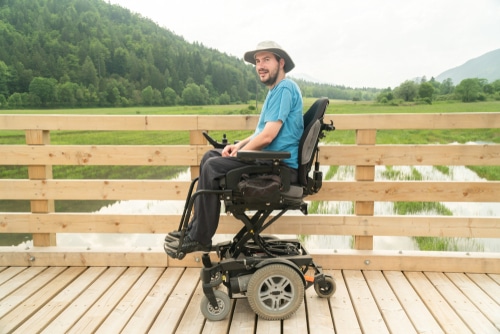
4. Exemplifying access and inclusion
This last pillar is similar to the other three in many ways. For example, it’s about empowering staff to provide support to travellers with disability. It’s also about incorporating feedback from people with disabilities and from stakeholders, communities and staff.
Additionally it’s about knowledge sharing within the travel and tourism industry. Different business should be sharing their insights around making the entire industry more inclusive and adaptable. This also applies to local governments and other industry bodies. The industry as a whole should be pioneering a disability inclusive attitude.
Travel businesses should be championing inclusivity and actively develop inclusive marketing for people with physical, cognitive, intellectual and sensory disabilities.
Disability accessible travel in Australia and abroad
Read the full WTTC Inclusive and Accessible Travel Guidelines here. And since we’re talking disability accessible travel, here’s a list of some wonderful accessible travel options in Australia and New Zealand:
- Pet friendly accessible accommodation
- Accessible accommodation for winter holidays
- NZ travel bubble accessible destinations
Find out about using your disability parking permit in another state and why having wheelchair travel insurance can be so valuable when you’re travelling. Speaking of which, read all about our wheelchair insurance that helps pay for damage or theft to your wheelchair.
Disability access and peace of mind
Did you know that Blue Badge Insurance offers up to 25% off your car insurance for wheelchair accessible vehicles and disability converted cars? Your plan can help you pay for repairs or replacement if something happens to your car or modifications.
And if you’re travelling with pets then also find out about getting up to 15% off pet insurance and up to 25% off Assistance Dogs insurance. These plans help pay for your pet or assistance animal’s health care needs, such as unexpected visits to the vet, medication and surgery.
Want to start your plan today? Just click below to find out more.


